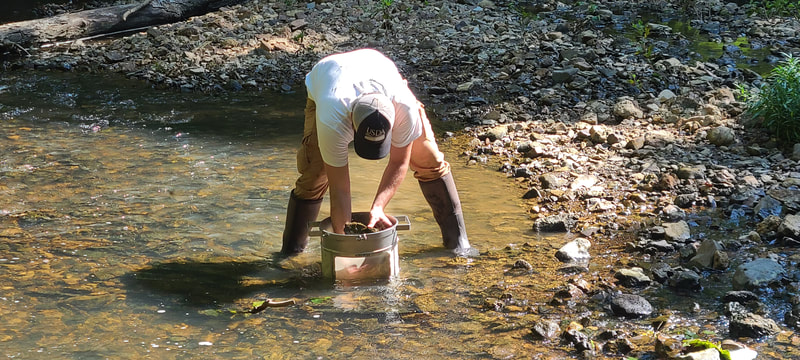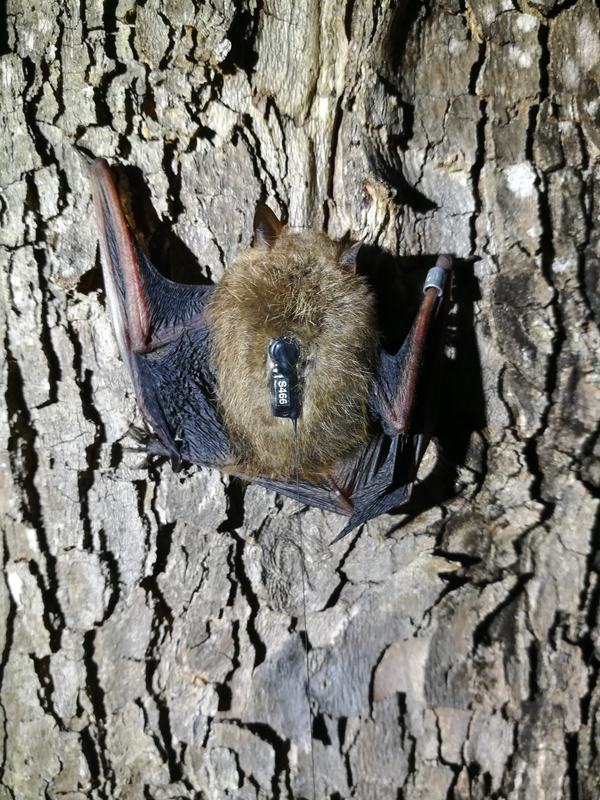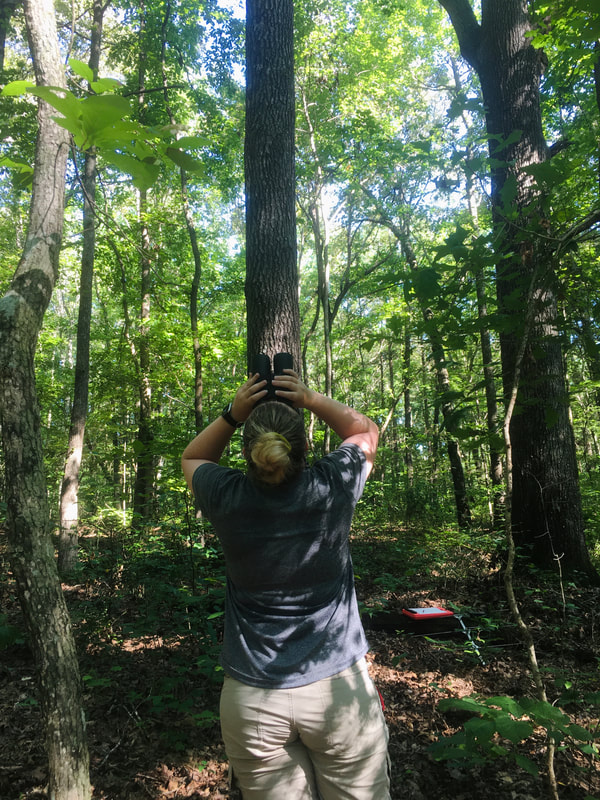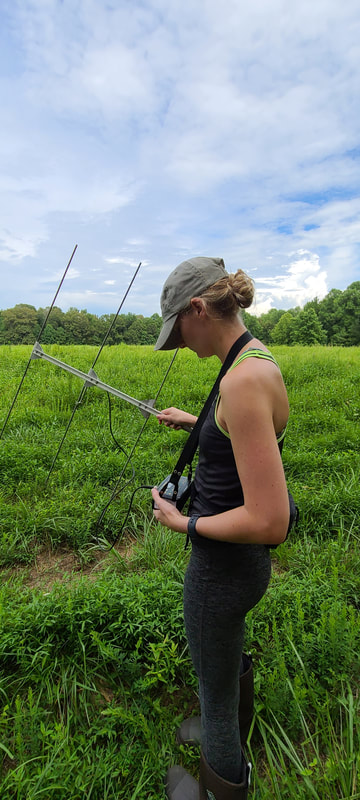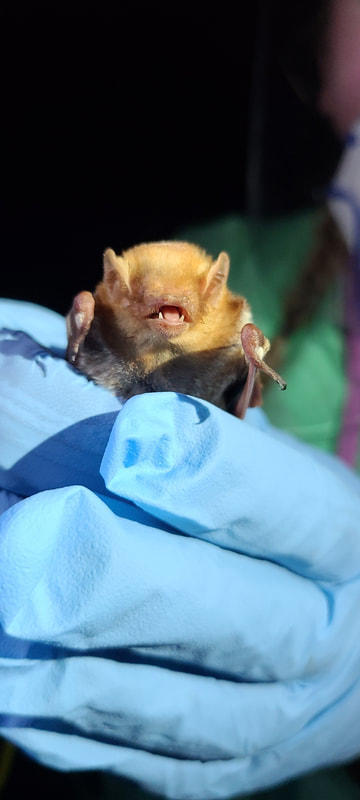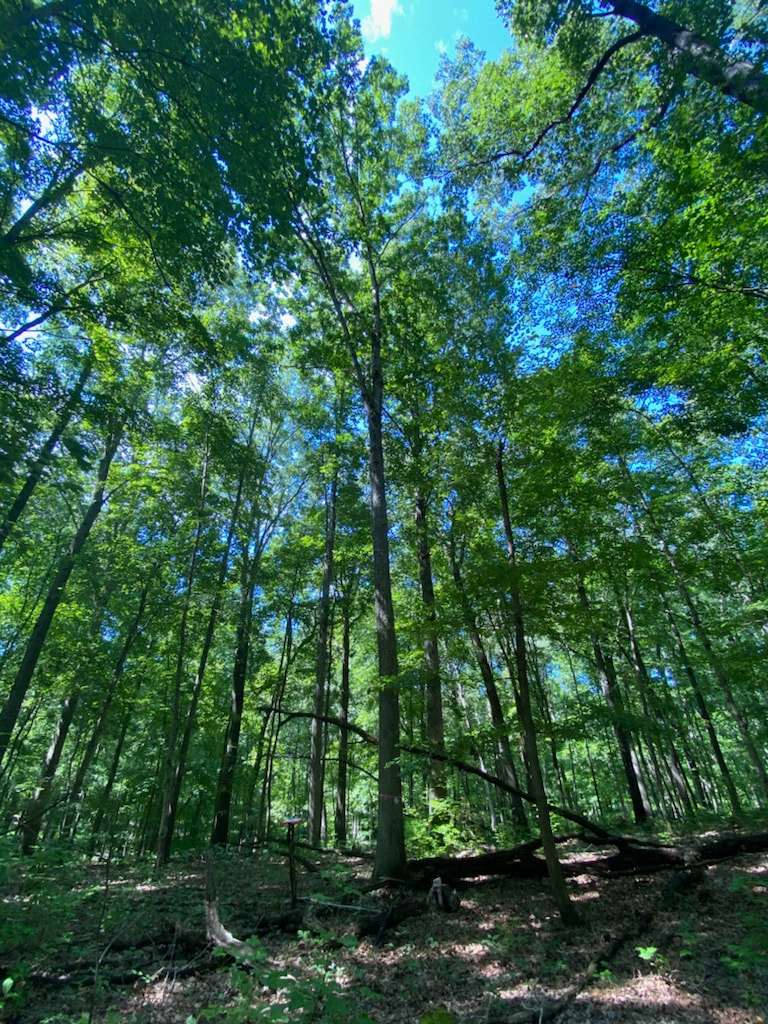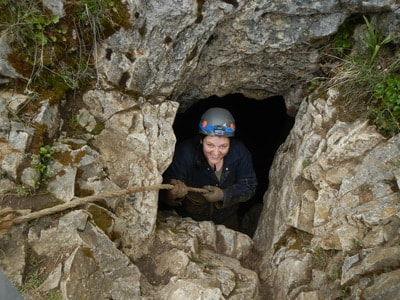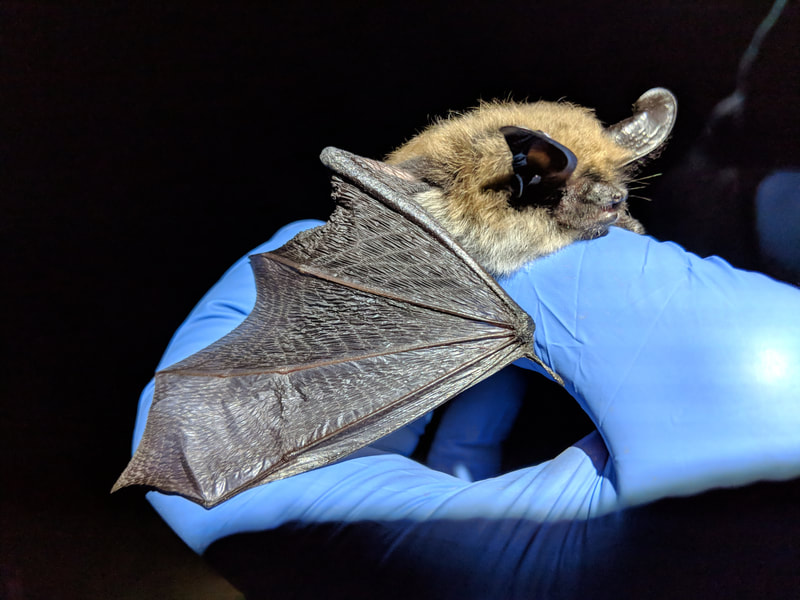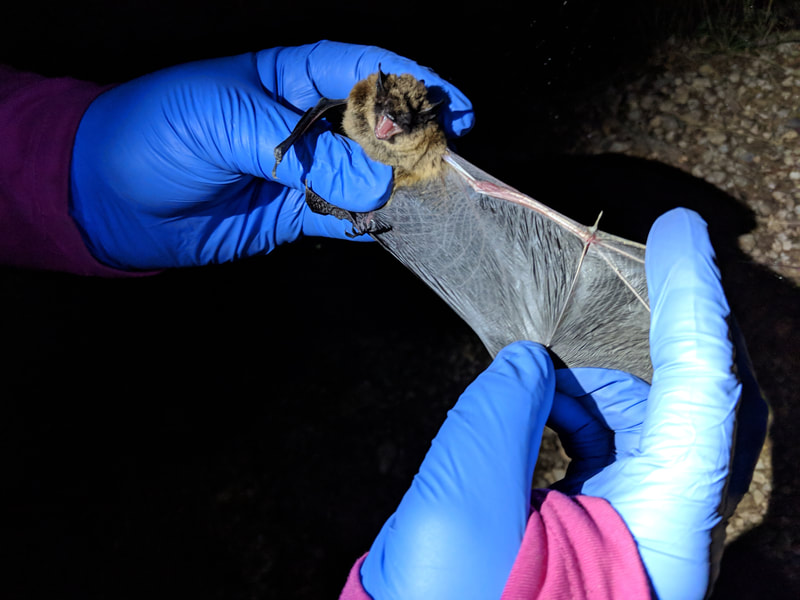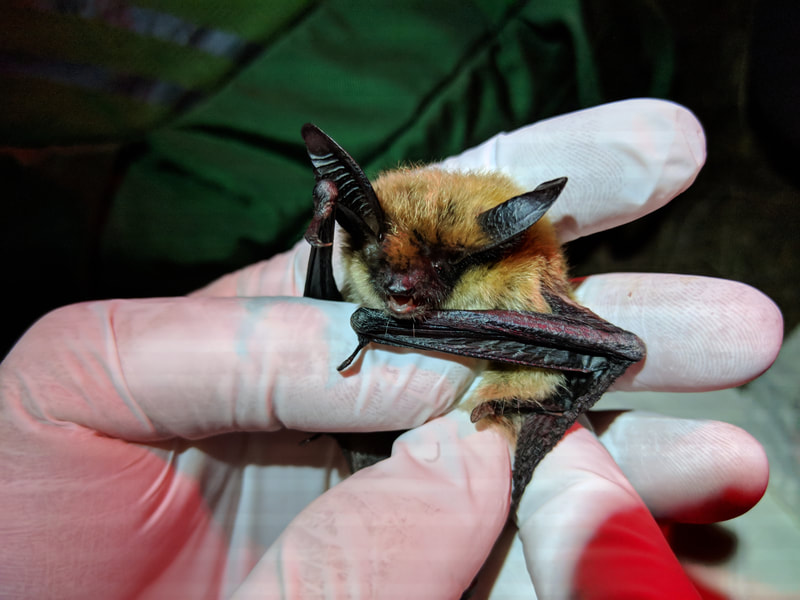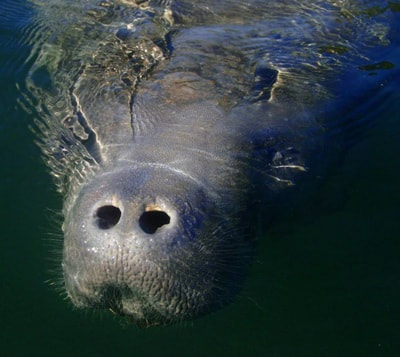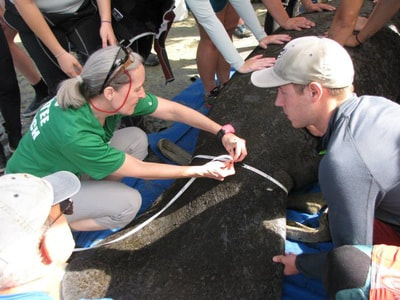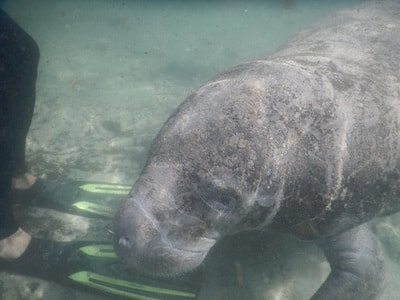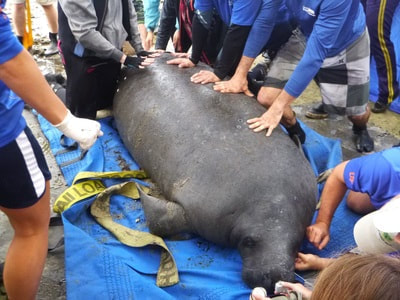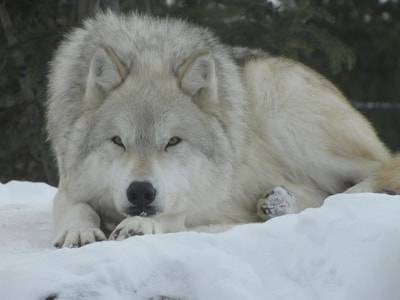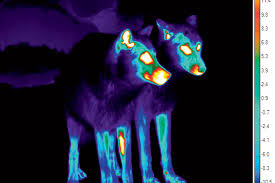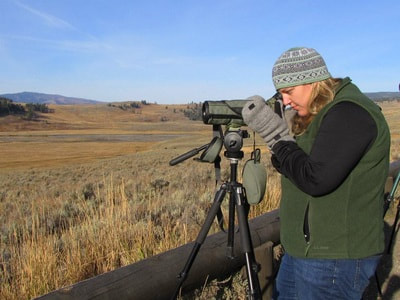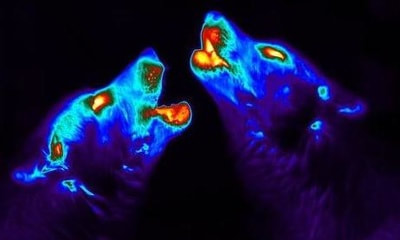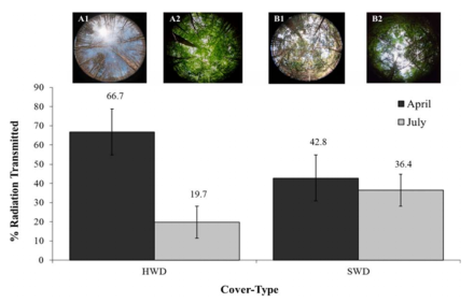Behavior of temperate bat species in response to increased predation risk
|
Graduate student Brandon Gulley (MS '24) quantified the impact of visual (owl and hawk decoys) and audio (owl and hawk calls) predator presence on foraging behavior in an experimental framework and determined the perception of predation significantly alters bat foraging activity. He found that both visual and audio cues decrease total foraging in most bat species and the impacts of weather variable, specifically precipitation, moon luminosity, and air temperature influence foraging site abandonment. The results of this study will help mitigate other sources of bat mortality outside the influence of disease. More specifically, we can help local land managers focus their management regimes on providing cover from predation and reduce the impacts on bat behavior.
|
Studying bat communities on Fort Campbell Army Installation, KY/TN
|
Assessing the energetic effects of white-nose syndrome in western bat species in the context of climate changeDr. Haase was a postdoctoral research associate at Montana State University in conjunction with the Wildlife Conservation Society on a project focusing on predicting the bioenergetic impacts of white-nose syndrome in western bat species. More information about the project can be found here.
|
Impacts of spatial configuration of thermal and forage habitats on the Florida manateeDr. Haase did her PhD in the School of Natural Resources and Environment and the Department of Wildlife Ecology and Conservation at the University of Florida with Dr. Robert Fletcher and Dr. Daniel Slone at the U.S. Geological Survey Sirenia Project. Her PhD dissertation focused on how the spatial configuration of forage and thermal habitats influences behavior of the Florida manatee (Trichechus manatus latirostris), a cold intolerant herbivorous marine mammal that relies on thermal refugia for thermoregulation.
|
Energetic costs of Sarcoptic mange in Yellowstone wolves using themal imageryDr. Haase worked with the U.S. Geological Survey's Northern Rocky Mountain Science Center in Bozeman, MT with Dr. Paul Cross researching how mange (Sarcoptes scabiei) impacts the heat balance of gray wolves (Canis lupus) in Yellowstone National Park. This work was featured in Wired magazine in May 2012 (Link to article), Science World, a Scholastic, Inc. magazine in September 2012 (Link to article), and on the Curiosity Series of the Discovery Channel, called "X-Ray: Yellowstone" (Link to video).
|
Integrating thermal constraints into habitat suitability for moose in the AdirondacksDr. Haase attended the State University of New York College of Environmental Science and Forestry (SUNY-ESF) for her M.S. At ESF she studied the relationship between the thermal ecology of moose (Alces alces) and how best to incorporate these thermal constraints into habitat suitability models.
|




